Recent Articles
Popular Makes
Body Types
2021 Ford Bronco Sport vs. 2021 Ford Escape
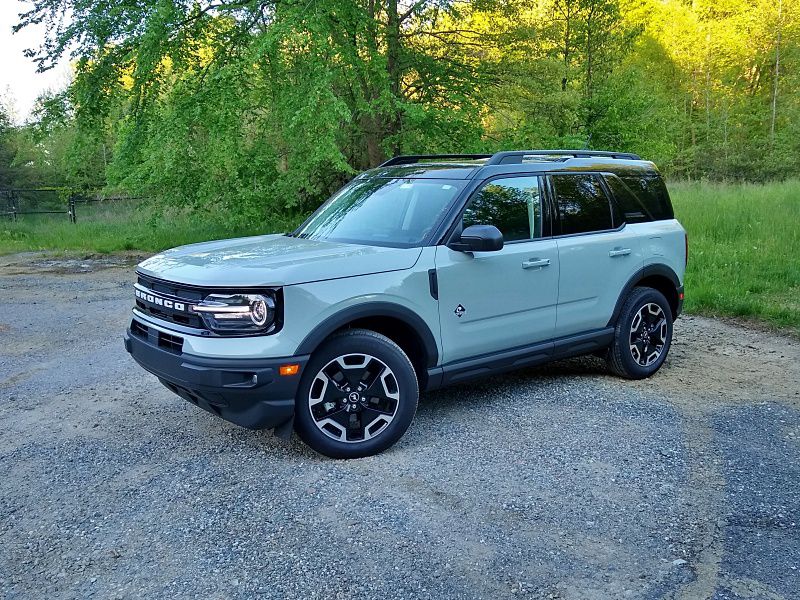
2021 Ford Bronco Sport ・ Photo by Brady Holt
At first, Ford had to make a choice with its small crossover: Did it want something boxy like a traditional SUV, or curvier like a car? For its first decade, the Ford Escape took the former approach; in recent years, it switched to the latter. These days, though, the compact crossover segment is so hot that Ford doesn’t have to choose anymore. In addition to the car-like Escape, it introduced the new 2021 Ford Bronco Sport, which puts a more rugged, outdoorsy body — inspired by the larger, mechanically unrelated Ford Bronco — on the same underlying mechanical pieces.
The differences are more than skin-deep, though. We tested both the Bronco Sport and the Escape so we can discuss how they compare across eight categories, to help you decide which small Ford SUV is better for you — the 2021 Ford Bronco Sport or the 2021 Ford Escape. We’ll also declare our own overall winner.
Pricing and Features
The Ford Bronco Sport is a bit smaller than the Escape, but that doesn’t mean it sells at a discount. In fact, it’s the Escape that costs less, starting at $24,885 versus the Bronco Sport’s $26,820.
The difference isn’t as dramatic when you consider the Bronco Sport’s extra standard features, at least: Every Bronco Sport has all-wheel drive, which costs $1,500 extra on the Escape. And it also comes standard with a touchscreen infotainment system that’s missing from the base Escape. But in general, you can get similar features on the Escape for the same money as the smaller Bronco Sport — and if you’re willing to skip all-wheel drive, you can pay less. We also expect fewer discounts on the Bronco Sport than the Escape, so you can expect to pay even less for the Escape in the real world. And don’t look for features like removable doors on the Bronco Sport; that’s strictly for the “real” Bronco.
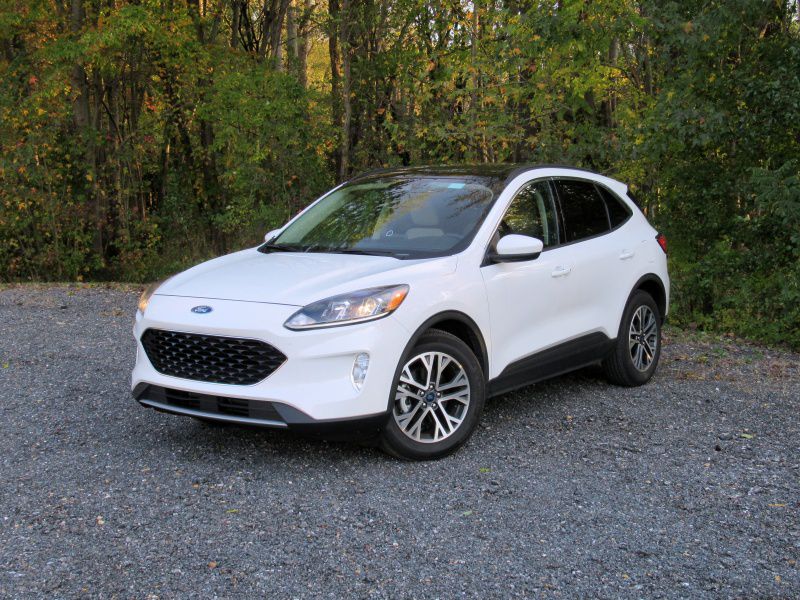
Photo by Brady Holt
Exterior Design
The biggest difference between these two crossovers is their styling, and there’s no similarity here to be found. The Bronco Sport is an upright box, resembling the 2008 to 2012 Ford Escape from the back and side, and a 1960s Bronco from the front. It’s not merely retro, but also timelessly rugged with straight lines and a subtle hump on the roof — like some older Land Rovers — where it rises higher above rear passengers’ heads.
In contrast, the Escape looks even less like a truck than most competing compact crossovers. Rather than trying to look like it’s trying to dominate either the road or the trails, it’s gentle, friendly, and approachable. While there’s little that’s rounded on the Bronco Sport, there’s even less that’s square on the Escape. The winner comes down to your personal aesthetic preferences, so we won’t name a winner.
Tie
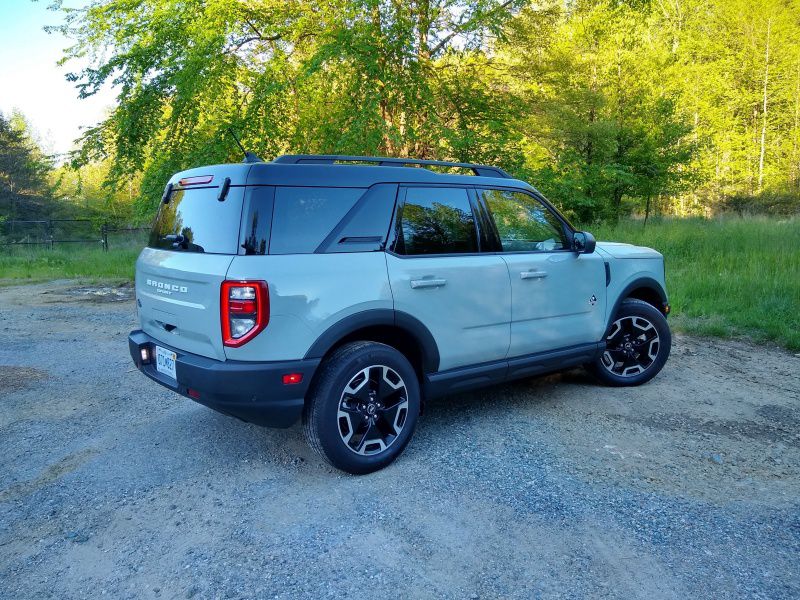
Photo by Brady Holt
Interior Design
The Bronco Sport and Escape have more similarities inside than outside. While their dashboard shapes are not identical, little about the Bronco Sport’s screams “truck,” and little about the Escape’s screams “car.” Both crossovers have sensible ergonomics, an 8-inch infotainment touchscreen with Android Auto and Apple CarPlay (except on the base Escape S model), and a rotary gear selector.
The differences are in the details. The Escape’s choice of colors and trim, such as beige upholstery and available woodgrain accents, speaks to its car-like premium attitude. The Bronco Sport’s materials and design choices skew more toward sturdy, yet without feeling cheap and basic. These include a textured but padded dashboard, zippered pockets on the front seatbacks, a rubber-lined cargo hold. Upholstery colors include unusual choices of brown, orange, and blue. A bucking bronco replaces a blue oval on the Bronco Sport’s steering wheel, and the digital displays show tumbling rocks as they awake. The Escape’s interior is not only less interesting than the Escape’s, but it also has some areas with cheaper-feeling materials. What’s more, an interior that aims to be luxurious has less margin for error than one that says “let’s have fun in the mud.”
Ford Bronco Sport
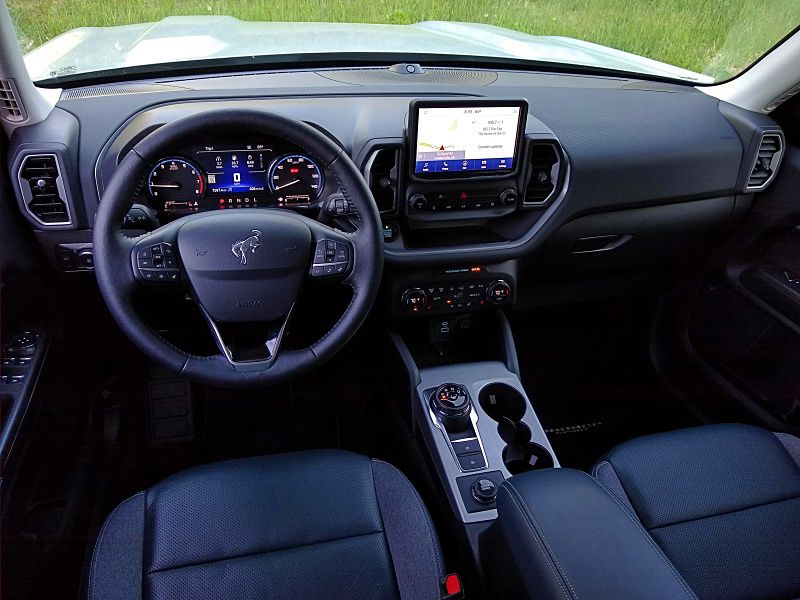
Photo by Brady Holt
Interior Comfort
We had no trouble getting comfortable in the front seats of both the Escape and the Bronco Sport, which are nearly identical under their different upholstery choices. Neither model has especially wide seats, but they’re supportive and comfortable if you fit fine. The boxier Bronco Sport has more headroom, but neither vehicle has a shortage.
Where the two SUVs differ is in the backseat. The Escape is about 8 inches longer than the Bronco Sport, split between a bigger nose and a roomier cabin. The Escape’s rear seat offers fore-aft adjustment to benefit either rear passengers or cargo. It’s pretty cramped when moved forward, unless the front seats are also moved forward, but there’s room for adults to be comfortable when the rear seat is all the way back. In the Bronco Sport, the rear seat is fixed in place and never provides ample knee space unless the front seats move forward. There’s again more headroom, and both vehicles do have a comfortable cushion, but the Escape wins when it comes to carrying more than two people.
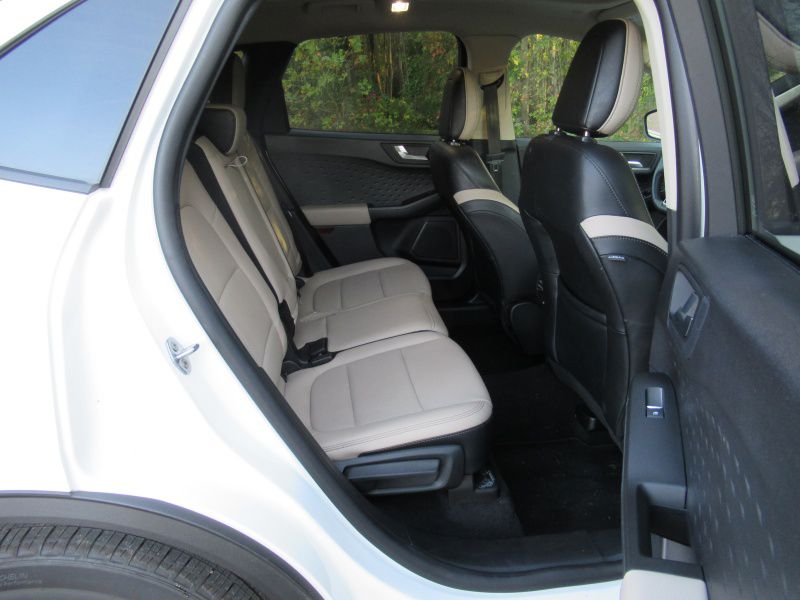
Photo by Brady Holt
Cargo and Utility
The bigger Escape has more cargo space than the Bronco Sport — not too shocking. Still, the boxier crossover isn’t far behind its bigger sibling.
The Escape features a pretty good 33.5 cubic feet of cargo space behind its rear seat when it’s all the way back in passenger-hauling mode; you pick up another 4 cubic feet by sliding the rear seat forward. Fold it down and you get 65.4 cubic feet, which is on the bottom end of the compact crossover segment. The Bronco Sport is close behind, with 32.5 cubic feet behind its fixed-position rear seat and 65.2 cubic feet with the seat folded. (The Escape’s cargo hold is longer and the Bronco Sport’s is taller, in case you have particular cargo in mind.) The base Escape is rated to tow 2,000 lbs, while an optional larger engine boosts that to 3,500 lbs. The Bronco Sport has the same engine options, but they top out at 2,000 lbs and 2,200 lbs, respectively. One Bronco Sport advantage is the handy flip-up rear windshield glass, a staple of the original Ford Escape, but it doesn’t overcome the Escape’s other cargo advantages.
Ford Escape
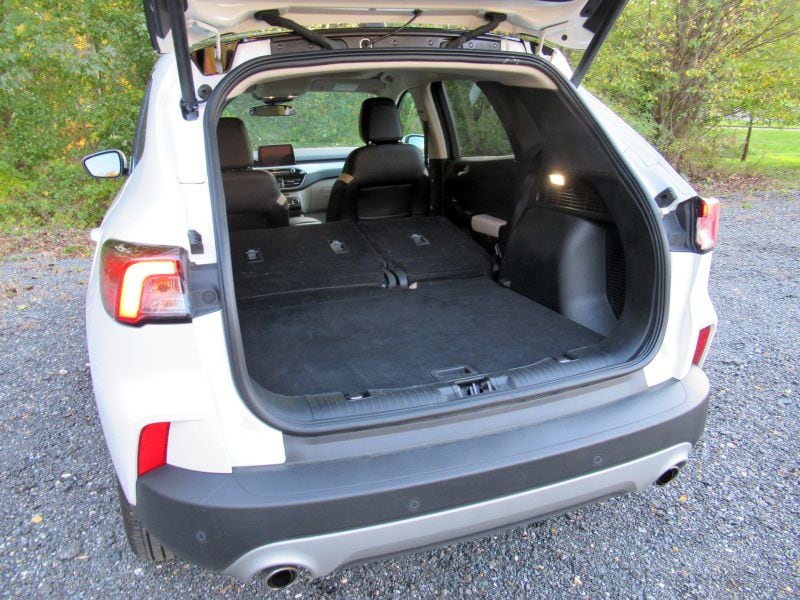
Photo by Brady Holt
Driving Experience
Both the Bronco Sport and the Escape are fun to drive on the road, with peppy turbocharged engines, responsive handling, and smooth rides. But each has one key advantage over the other.
The Bronco Sport’s advantage is its off-road capability. Especially in its Badlands and First Edition trim levels, it can tackle more challenging conditions than an ordinary crossover. Those models have toughened suspensions and protect the underside of the vehicle with skid plates. They also add an inch of ground clearance: 8.8 inches versus 7.8 inches on other Bronco Sport trim levels and on most Escapes, and their G.O.A.T. (Goes Over Any type of Terrain) modes include Mud/Ruts and Rock Crawl selections. You give up some on-road agility with these off-road-focused Bronco Sports, though. And that brings us to the Escape’s advantage. Both SUVs come standard with a 181-horsepower three-cylinder engine, which is peppy but suffers from excess vibration at times. Both vehicles offer a quicker, smoother 250-horsepower four-cylinder — but on the Bronco Sport, you can only get it on the off-road models. If you want maximum power, the Escape wins this category; if maximum capability, the Bronco Sport.
Tie
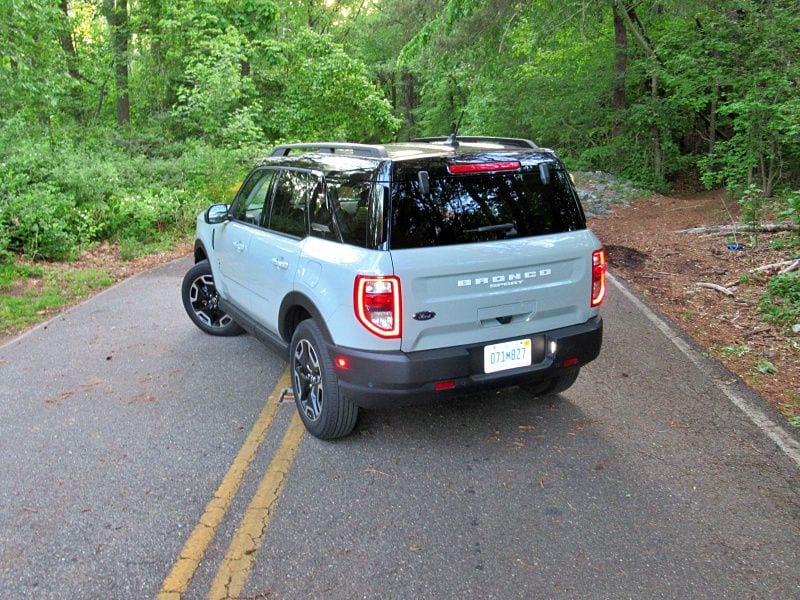
Photo by Brady Holt
Fuel Economy
While the Bronco Sport holds its own for its driving experience, this boxier SUV loses ground to the Escape in EPA fuel economy ratings. The base three-cylinder Escape gets EPA scores of 28 mpg in the city, 34 mpg on the highway, and 30 mpg combined, while AWD brings it to 26 mpg city, 31 mpg highway, and 28 mpg combined. By contrast, the three-cylinder Bronco Sport (sold only with AWD) manages just 25 mpg city, 28 mpg highway, and 26 mpg combined.
There’s an even bigger difference if you choose the four-cylinder engine, likely because the Bronco Sport pairs it with a higher ground clearance and off-road tires. It manages 21 mpg city, 26 mpg highway, and 23 mpg combined, low for a small SUV even considering its power. The comparable Escape manages 23 mpg city, 31 mpg highway, and 26 mpg combined. There’s also an available 41-mpg Ford Escape Hybrid. In our non-scientific testing, we actually got slightly better mileage behind the wheel of a three-cylinder Bronco Sport than a three-cylinder Escape; the former trounced EPA estimates to average 30 mpg during a weeklong test, while we saw about 29 mpg in the Escape. Still, with higher EPA ratings and an available hybrid, the Escape is the mpg winner.
Ford Escape
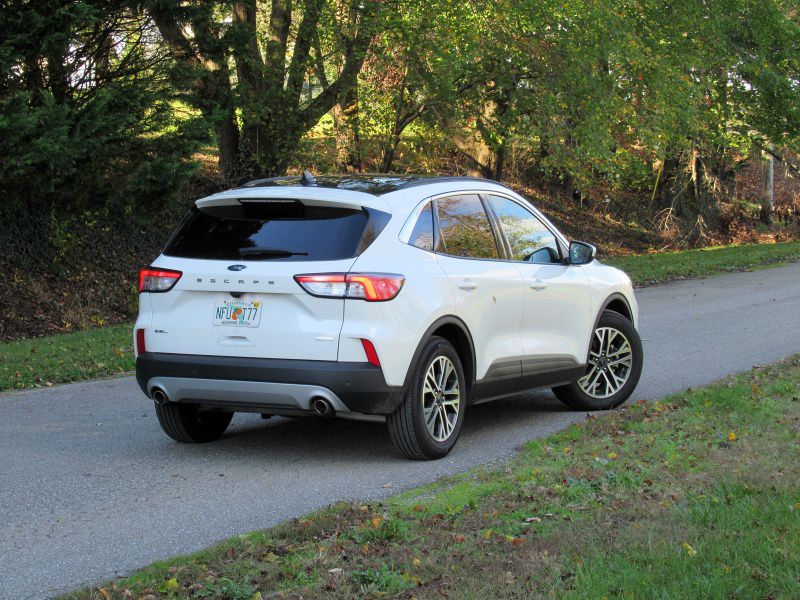
Photo by Brady Holt
Safety
Given their shared underpinnings, it’s no surprise that the Escape and Bronco Sport are similarly safe vehicles. They achieved the same scores in Insurance Institute for Highway Safety crash testing — top marks — and while the National Highway Traffic Safety Administration hasn’t yet tested the Bronco Sport, we expect it to again match the Escape’s high ratings. They also have the same long list of standard safety features, including automatic emergency braking with pedestrian detection and a blind-spot monitoring system.
The Bronco Sport wins this category due to its headlights. Every Bronco Sport has LED headlights that earn the top IIHS illumination score of Good. Most Escapes have halogen lights that earn the second-lowest score of Marginal, and even the best Escape headlights are merely judged Acceptable.
Ford Bronco Sport
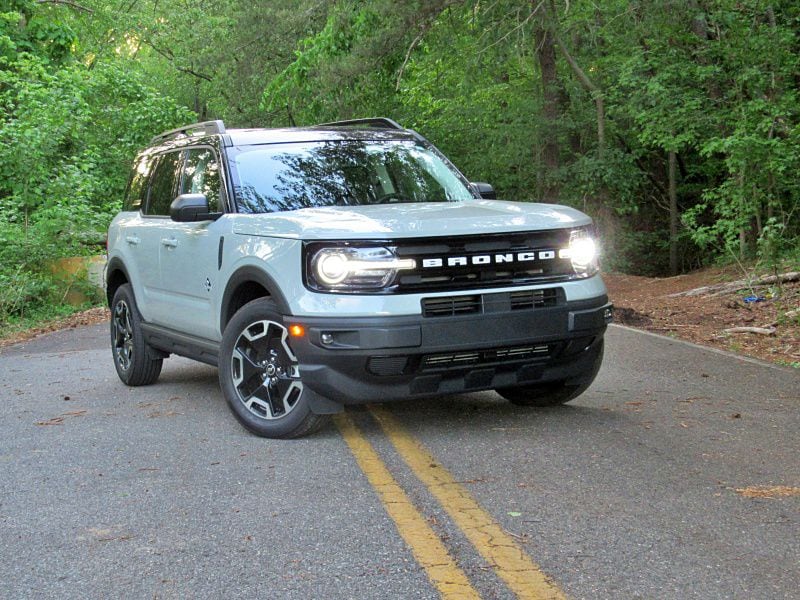
Photo by Brady Holt
Final Thoughts
You probably started reading this article rooting for the Escape or pulling for the Bronco Sport. And since the two SUVs are similar in most respects besides their flavor, most folks can comfortably make their decision based on that gut feeling.
We think more of you are feeling that emotional connection to the Bronco Sport. It’s the cool, fun choice between the two — the one that doesn’t look like anything else, rather than the one that blends in. It’s the one with the thoughtful interior touches like those zippered seatback pockets that elevate both its vibe and its functionality. And it’s the one that can really go off-road. Still, the Escape carries the day on most objective factors. It’s roomier, less expensive, and more economical. Driving enthusiasts can appreciate its more widely available 250-horsepower engine, outdoorsy types can benefit from its higher towing capacity, and eco-minded customers will love the Escape Hybrid. As long as you don’t mind a small backseat and higher price, we don’t think you’ll be unhappy in the Bronco Sport. But unless your heart tells you otherwise, the Escape is the more sensible choice.
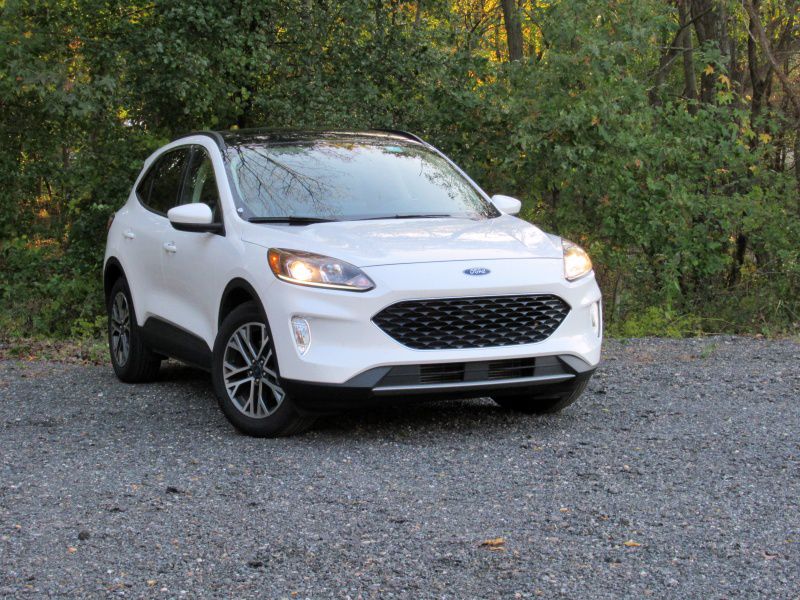
Photo by Brady Holt